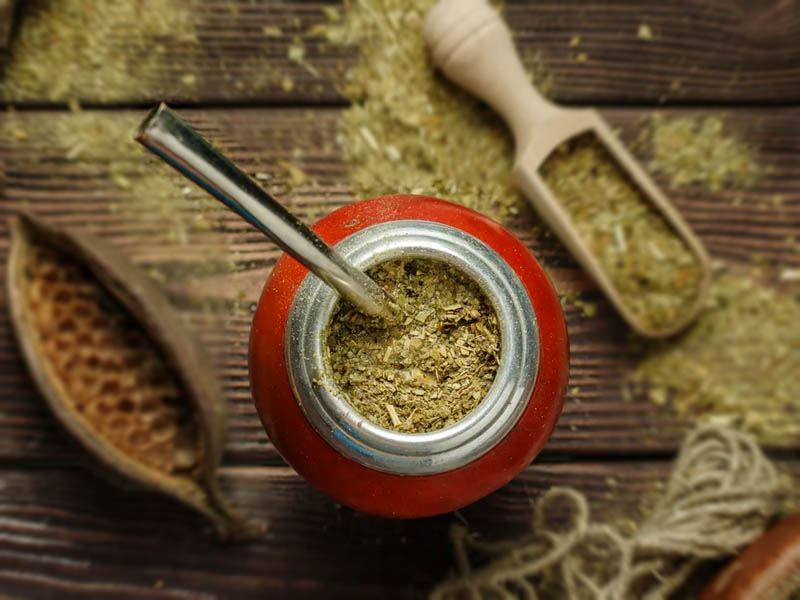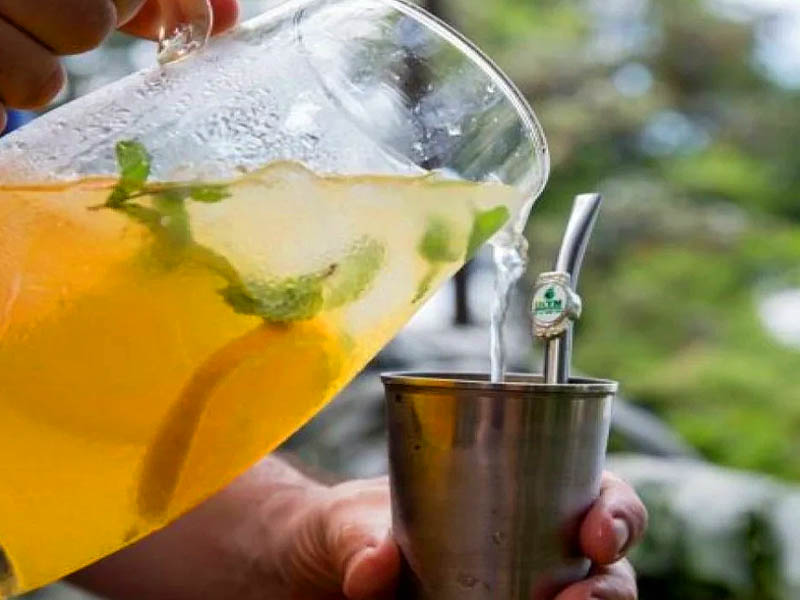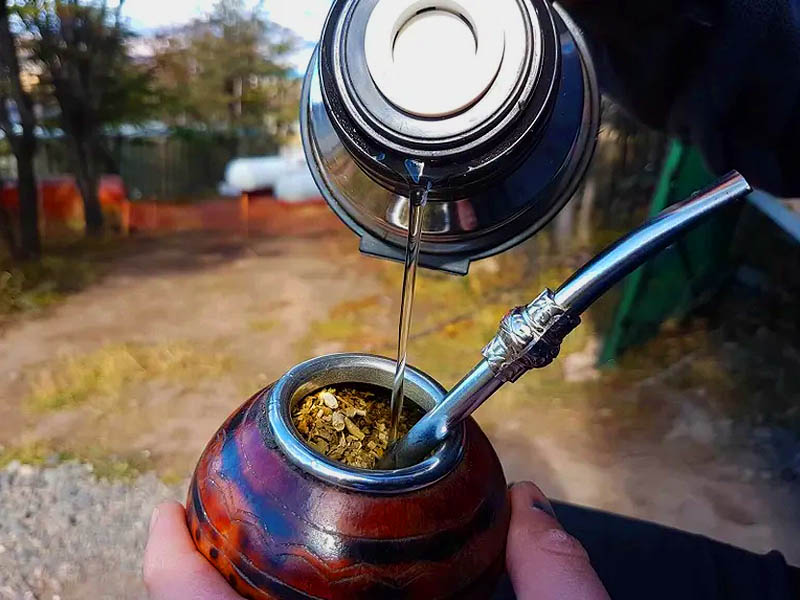It is an infusion that the indigenous people of the region drank, the Guarani, and other tribes with which they were related, such as the Qom or the Querandí. After the conquest, the Spanish also adopted it and it remained popular to this day.
It is obtained from a plant, yerba mate (Ilex Paraguariensis), native to the area. Its leaves are dried and ground, although they may or may not carry the remains of branches, petioles and floral peduncles. In Argentina we know this herb as "con palo"(with stem). In Uruguay, only the leaves are usually used.
It is a stimulating drink as it contains caffeine, the same substance found in coffee and, to a lesser extent, in tea. According to a study carried out at the University of Illinois, USA, in 2007, it was discovered that it has antioxidant properties, that it improves the liver system and that it helps to lower cholesterol, as well as being an excellent diuretic, among other things. It can be checked at the following link: https://ift.onlinelibrary.wiley.com/doi/full/10.1111/j.1750-3841.2007.00535.x
It is cultivated mainly in Argentina and Brazil, although both its properties and its flavor have made it expand to other countries. According to the 2019 report from the Argentine Secretariat of Agro-Industry, the largest demanders of this product worldwide in 2018 were Uruguay, Syria, and Chile, followed by Germany and the United States.
How do you make a good mate?
The truth is that each person has their ideal way of preparing the mate, and these tend to contradict each other.
What never changes is that, unlike tea or coffee, the water for mate should not boil. It heats up to 70 or 80 degrees. It is usually poured then into a container to maintain the temperature: the thermos. Many also pour the water directly from the kettle.
Meanwhile, the mate itself is prepared: the container where the yerba mate is placed. It can be made of various materials, such as wood, ceramic or pumpkin. Although in Argentina we know it by that name, it receives others according to the region: porongo or guampa in Uruguay, chimarrão in Brazil, etc.
The Guarani people used a cane to drink the mate. Today “bombillas”(metal straws with a filter at the end) are used.
In general, the yerba is placed up to a third of the container, then the bombilla is placed and the water is poured. The act of pouring the water into the mate is called “cebar”, and whoever does it is called teh “cebador”.
The way to prepare it differs as many times as the people who do it, and the techniques contradict each other. Many “cebadores” (the ones in charge of pouring the water) get upset if someone else messes with the straw. HE is the only one in charge. Some say that dry yerba should always be left in the mate to gradually moisten it. Or that you have to shake the yerba in the mate to remove the dust it brings (always with one hand covering the mouth of the container and turning it over to move).
Some people drink it sweet, adding sugar to counteract the bitterness of the yerba’s tannins. On the other hand, for others the true mate must be bitter. Many add herbs such as chamomile, mint or lemon verbena, which are found in different regions. Some people add orange peel, or even coffee, to the yerba.
And although it is always done with hot water, there are cold variants. In the warm regions of northeastern Argentina, Paraguay and southern Brazil, the “tereré” is made, a version of mate prepared with cold and very sweet fruit juice. The milk mate is also known.
The ritual.
The “cebador” is in charge of drinking the first mate. When he finishes it, he pours more water and passes it to the next in the round, who in turn returns it when finished.
The person to whom the mate is given should not be repeated until the entire round has passed again and it is his turn again. If this happens due to some distraction, many kiss the base of the mate and pass it on to whoever it is.
In turn, when the mate is received, it is not thanked. Gratitude comes only after the last mate, when you no longer want to continue drinking.
The yerba should be moist but not waterlogged. When the water is no longer absorbed and pieces of the leaf and steam of the yerba are floating, it means that it is time to change it. Some estimate, according to the temperature of the water, around 15 mates. But everyone is guided by the taste. The yerba loses it with each pouring.
You will see that we call mate not only the habit and act of drinking it, but also the container and the plant. But it is much more than that: it is part of the culture. People gather to drink mate, it is the excuse to meet and chat. When done alone, drinking mate becomes an intimate act, a moment of introspection. It is something that is carried with one, that is in each house and for every occasion. There are bars or cafes that offer mate, but they are just for tourists.
And how do you prepare your mate? Do you like to add herbs? Or do they jump on the latest trend and add shredded coconut? A new and healthy way to give it some sweeterness. Or are you more traditionalists and prefer it bitter? If you are not from here, would you dare to try it? We are sure you will love it.
Learn everything about mate, a very Argentine custom.
Mate is more than a drink. It is a practice rooted mainly in Argentina, Uruguay and Paraguay, although it is also found in southern Brazil and parts of Bolivia and Chile.


